calsfoundation@cals.org
Arkansas Democrat-Gazette
The Arkansas Democrat-Gazette, the state’s largest newspaper, is based in Little Rock (Pulaski County), with a separate northwest Arkansas edition. After the Arkansas Democrat bought the assets of the Arkansas Gazette in October 1991, the Arkansas Democrat-Gazette was born. It is the only statewide newspaper, offering home delivery in all parts of Arkansas.
The Arkansas Democrat-Gazette has its roots in the Reconstruction era. A newspaper first called The Liberal became The Journal and then The Chronicle. Finally, it became The Evening Star, having passed through several owners and editors by 1875. On April 11, 1878, Colonel J. N. Smithee acquired the newspaper and renamed it the Arkansas Democrat. Smithee, who had served in the Confederate army, immediately launched an attack on the Arkansas Gazette, which was founded by William Woodruff at Arkansas Post (Arkansas County) in 1819 before being moved to Little Rock in 1821 after relocation of the territorial capital. Throughout 1878, Smithee criticized the Gazette editorially concerning the newspaper’s position on the repudiation of state debt. The Gazette replied in editorials that the name Democrat was simply a cover for the Republican Party. Smithee, a colorful character, even had a gun battle in downtown Little Rock with Major John Adams, one of the Gazette’s owners. Neither was seriously wounded, but it marked the start of a competition between the two newspapers that lasted more than a century.
Smithee, who also was state land commissioner, was charged with a conflict of interests by a state board of printing commissioners and forced to sell the Democrat. The buyers in September 1878 were James Mitchell, a former Gazette editor, and General W. D. Blocher, a former Gazette owner. Ironically, Smithee was later named Gazette president.
Democrat ownership changed hands three times between Mitchell’s death in 1902 and the emergence of K. August Engel, who would be the driving force at the Democrat, in 1926. Engel, who had joined the Democrat as business manager in 1911, bought a controlling interest in 1926 and owned the newspaper for the next forty-two years. In 1930, Engel acquired a YMCA building at Capitol and Scott streets in downtown Little Rock and converted it into the newspaper’s headquarters. Today, though the building no longer houses the Democrat-Gazette presses, it remains the home of the newsroom and business offices. Engel, a bachelor who lived in a downtown hotel, took an active role in editing the newspaper.
Even as an afternoon newspaper, the Democrat briefly overtook the morning Gazette in circulation after the 1957 desegregation of Little Rock Central High School. The Gazette won two Pulitzer Prizes in 1958—one for meritorious service and the other for executive editor Harry Ashmore’s editorial writing—but many Arkansans were outraged by the positions the newspaper took against Governor Orval Faubus and switched to the Democrat. In the first quarter of 1960, the Democrat had a daily circulation of 88,890, compared with the Gazette’s 88,152.
Upon Engel’s death in January 1968, his nephews, Marcus George and Stanley Berry, took over the Democrat. George was the editor and Berry the publisher. In the 1960s and 1970s, the Gazette regained its role as the state’s dominant newspaper. By the time George and Berry sold the newspaper in 1974, the Democrat was steadily losing circulation. The Gazette circulation was 118,702, compared with 62,405 for the Democrat. The Gazette also had almost three times the Democrat’s revenue. The Democrat’s buyer was the Palmer Group, headed by Walter E. Hussman, who already owned daily newspapers in Texarkana (Miller County), Hot Springs (Garland County), El Dorado (Union County), Camden (Ouachita County), and Magnolia (Columbia County). The purchase price was $3.7 million. Hussman named his twenty-seven-year-old son, Walter E. Hussman Jr., Democrat publisher. The younger Hussman graduated from a New Jersey prep school in 1964 and the University of North Carolina in 1968 with a journalism degree. He later received a master’s in business administration from Columbia University.
The younger Hussman grew up in Camden, working at his father’s newspapers. In Little Rock, Hussman faced a formidable challenge: operating an afternoon newspaper in decline. By 1974, only thirty-four U.S. cities had separately owned newspapers that competed against each other, down from more than 500 in the 1920s.
For years, journalists at the Democrat generally had labored in the shadows of the better-paid, better-known journalists at the Gazette. At times, their jobs in part consisted of rewriting stories from the morning Gazette for the afternoon Democrat. However, the Democrat produced a number of well-known, well-read journalists, especially columnists. The best known of the group was Karr Shannon, a Democrat columnist from December 1944 until August 1971. He wrote a column titled “Run of the News.” For most of those years, Shannon produced between 600 and 700 words, seven days a week, fifty weeks a year. After Hussman purchased the newspaper, well-known columnists included Bob Lancaster, who provided biting, humorous coverage of the Arkansas Legislature; and sports columnists Fred Morrow and Jim Lassiter, who criticized the University of Arkansas Razorbacks much more often than Gazette sports columnists did.
In 1977, Hussman approached the Gazette’s owners and sought a joint operating agreement in which the two papers would share circulation and business operations while maintaining separate editorial staffs. The Gazette owners declined. Hussman responded by expanding the amount of space devoted to news and offering free classified ads, something the Gazette would not match until December 1987. He also hired the former Little Rock bureau chief for The Associated Press, an aggressive newsman named John Robert Starr. The number of reporters increased from fifty-seven to 101. In 1979, the Democrat gradually switched to morning publication. It started with a morning edition available only in Pulaski County. The final afternoon edition of the Democrat was published on October 7, 1979. Hussman began using color in the Democrat in 1982, five years before the Gazette did.
Of the growing newspaper war, the Society of Professional Journalists’ Quill magazine said in 1981, “Arkansas has not seen such fussin’ since Harry Ashmore and Gov. Orval Faubus went at it in the late 1950s.” Starr was quoted in the article as saying, “The Democrat might still be a dog, but at least it barks.” A March 1983 Wall Street Journal article on the newspaper war said, “Sometimes it seems as if the gray old lady of this city is being mugged by a street brawler.”
In December 1984, the Gazette filed an antitrust lawsuit against the Democrat’s owners, charging that they “conspired among themselves and with others with the specific intent to monopolize” the newspaper market in Little Rock. The trial did not begin for almost two years. But in March 1986, a federal jury in the court of U.S. District Judge William Overton ruled that the Democrat was innocent of allegations that it tried to run the Gazette out of business through unfair trade practices. Before the year was over, the Patterson family of Little Rock had sold the Gazette to Gannett Co. Inc., the nation’s largest newspaper chain, with ninety-three daily newspapers (ninety-nine as of 2006). Despite investments by the Gazette’s new owners, the Democrat continued to make circulation gains. By April 1988, the Sunday Democrat had reached a circulation of 192,000, doubling its circulation of a decade earlier. For the first time since the Hussman purchase, the Democrat had more than forty percent of the Little Rock newspaper market.
An additional boost to the Democrat came in May 1989, when Dillard Department Stores Inc. (now Dillard’s Inc.) of Little Rock, the Gazette’s largest advertiser, stopped advertising in the Gazette after an ad-pricing dispute. The department store chain had spent almost $2 million a year with the Gazette. But even more important to Arkansas readers was the August 1989 defection to the Democrat of Orville Henry, the Gazette sports editor for forty-six years and the state’s most famous columnist. Symbolically, Henry’s move down the street was a sign to many Arkansans that the Democrat was winning the newspaper war.
In July 1990, as Gannett hired the Gazette’s third editor in as many years, the Democrat surpassed the Gazette in Sunday circulation for the first time since the 1960s. The Gazette continued to have more weekday circulation. In August 1990, Starr told Advertising Age: “There was no way the Democrat could have won unless the Gazette made all the wrong moves. I think they’ve made all the wrong moves.” In October, another popular Gazette columnist, John Brummett, resigned. His columns soon began appearing in the Democrat. Advertising Age reported in December 1990 that the Democrat was the fastest-growing newspaper in the country, while the Gazette was losing circulation the fastest.
On October 18, 1991, Hussman bought the Gazette’s assets. He announced that the Gazette had ceased publication and that the Democrat would be called the Arkansas Democrat-Gazette. In the first issue of the newly christened Democrat-Gazette, Hussman wrote: “Today is the first issue of the Arkansas Democrat-Gazette, a combination of the 120-year-old Arkansas Democrat and the 171-year-old Arkansas Gazette. Little Rock and Arkansas have been served for over a century by what had become two of the best statewide newspapers in America. Beginning today, readers will get the best of both newspapers in one daily edition. Today is also the culmination and the end of perhaps the most intense newspaper competition ever known in the newspaper business.”
In April 1992, Hussman hired Pulitzer Prize–winning editorial page editor and nationally syndicated columnist Paul Greenberg away from the Pine Bluff Commercial. On June 23, 1992, Starr announced his retirement. Little Rock attorney Griffin Smith Jr., who had been the newspaper’s part-time travel editor while practicing law, was named executive editor. He served until his resignation on April 30, 2012. Hussman kept a large amount of space devoted to news, even as a monopoly newspaper in Little Rock.
In 2000, Hussman entered an alliance with Community Publishers Inc. and its Fayetteville (Washington County) and Bentonville (Benton County) newspapers. The Democrat-Gazette began a separate northwest Arkansas edition and inserted the Northwest Arkansas Times of Fayetteville into Washington County editions and The Benton County Daily Record of Bentonville in Benton County editions. After paying off the debt from his 1998 purchase of the Chattanooga Times Free Press in Tennessee, Hussman in 2005 bought the Northwest Arkansas Times, The Benton County Daily Record, and eight weekly newspapers from Community Publishers. However, the newspaper industry in the twenty-first century has undergone intense competition with other forms of media, especially online platforms and social media which have undercut the market for advertising. In order to save costs, the Arkansas Democrat-Gazette has scaled back its physical delivery of printed newspapers to some parts of the state and, instead, is offering subscribers iPads on which to read the electronic version of the newspaper, although printed newspapers remain available for purchase in select stores and are delivered to subscribers on Sunday. In August 2020, Democrat-Gazette purchased the Pine Bluff Commercial from Gannett.
In December 2022, it was announced that Eliza Hussman Gaines, Walter Hussman’s daughter, would succeed him as publisher starting the following year.
For additional information:
Arkansas Democrat Project. Archives of the Davis and Barbara Pryor Center for Arkansas Oral and Visual History. Special Collections. University of Arkansas Libraries, Fayetteville, Arkansas. Online at http://pryorcenter.uark.edu/project.php?projectFolder=Arkansas%20Democrat&thisProject=1&projectdisplayName=Arkansas%20Democrat%20Project (accessed April 22, 2022).
Arkansas Online. http://www.arkansasonline.com/ (accessed April 22, 2022).
Bowden, Bill. “Democrat-Gazette out to Shift Print Readers to Digital by ’20.” Arkansas Democrat-Gazette, May 22, 2019, pp. 1B, 9B.
Dougan, Michael. Community Diaries: Arkansas Newspapering, 1819–2002. Little Rock: August House, 2003.
Jacob, Mark. “The Arkansas Gamble: Can a Tablet and a Print Replica Rescue Local News?” Local News Initiative, Northwestern University, January 13, 2020. https://localnewsinitiative.northwestern.edu/posts/2020/01/13/arkansas-democrat-gazette-tablet/index.html (accessed April 22, 2022).
Martin, Richard. “Nightmare on Third Street: The Final Chapter.” Arkansas Times, December 1991, pp. 44–47, 88–90.
McConnell, Jerry. The Improbable Life of the Arkansas Democrat. Fayetteville: University of Arkansas Press, 2016.
Miller, Lindsey. “The End Is Here: The Arkansas Democrat-Gazette Shifts to Digital Delivery.” Arkansas Times, June 2019, pp. 28–33. Online at https://arktimes.com/news/cover-stories/2019/06/28/the-arkansas-democrat-gazette-shifts-to-digital-delivery (accessed April 22, 2022).
O’Neal, Rachel. “The Family Business.” Arkansas Democrat-Gazette, May 5, 2019, pp. 1E, 3E.
Rex Nelson
Delta Regional Authority
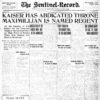 WEHCO Media, Inc.
WEHCO Media, Inc. Arkansas Democrat Newsroom
Arkansas Democrat Newsroom 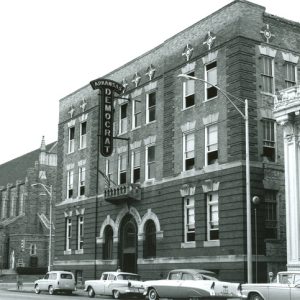 Arkansas Democrat Building
Arkansas Democrat Building 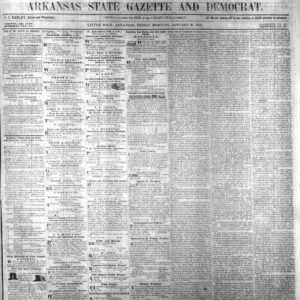 Arkansas State Gazette and Democrat
Arkansas State Gazette and Democrat 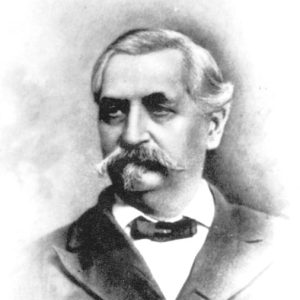 James Mitchell
James Mitchell 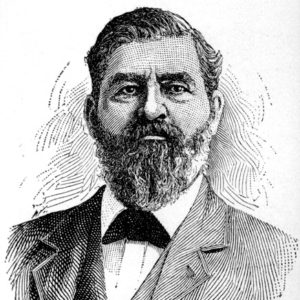 J. N. Smithee
J. N. Smithee 




Comments
No comments on this entry yet.